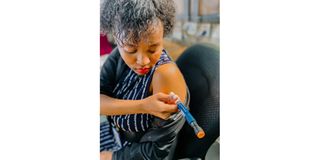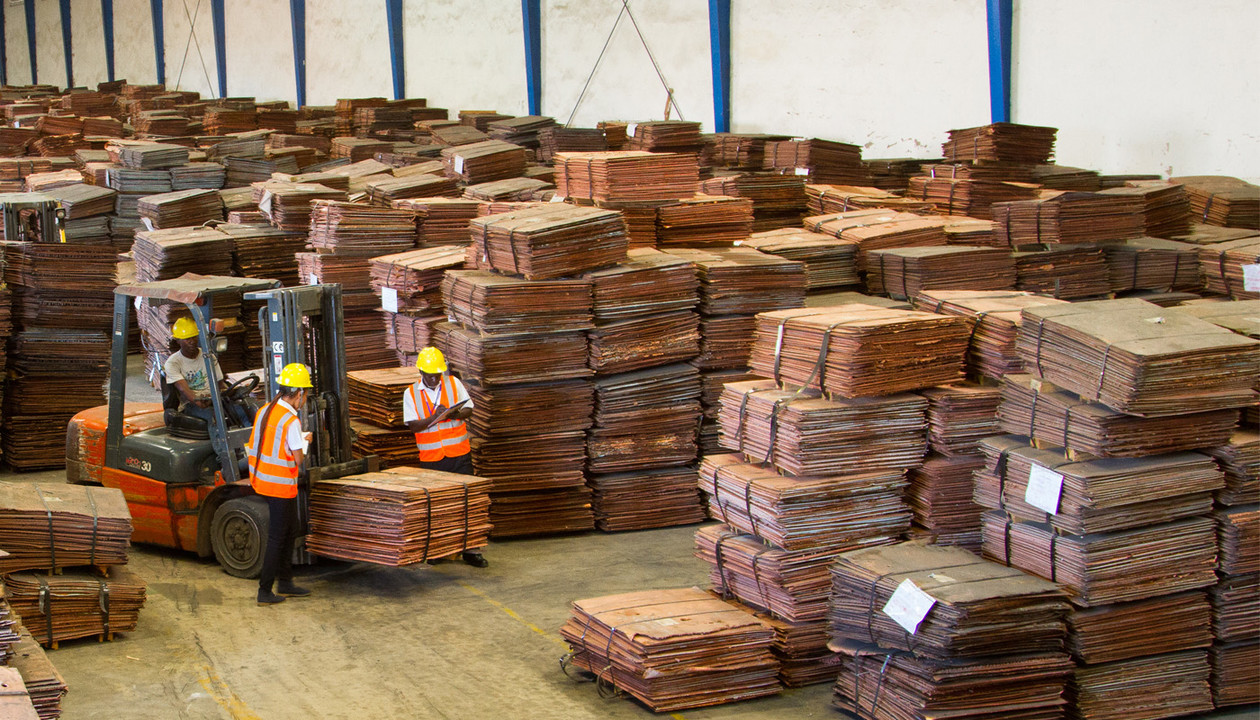Living with type 1 diabetes, Detricia’s story

Detricia with her diabetes specialist and CEO of Shree Hindu Mandal Hospital, Prof. Kaushik Ramaiya. PHOTO | DETRICIA PAMBA
What you need to know:
- Ten years ago, when i was just 13 years old. I was diagnosed with type 1 diabetes. I was only a secondary school student with hopes and dreams of becoming a diplomat or maybe a nun...
Here I am, looking in the mirror and staring at me is a young intelligent girl, who is talkative and very social. I see Detricia Pamba as a brave young lady. The way she carries herself and interacts with others. How hard-working she can be when she’s off to get what she wants, a fighter of her dreams, always cheerful. This is the Detricia that people come across from day to day, but behind that incredible human being is just a girl, who not so long ago survived a great ordeal, being out of the ICU for the third time in ten years since she was diagnosed with type 1 diabetes.
“Diabetes is an incurable disease. When you get it, you die.” These words kept playing in my head after a nurse at Bombo hospital in Tanga Region gave me some astonishing news that changed my life entirely.
“Where did a young girl like you get such a high level of blood sugar?” The nurse shouted as she re-checked my blood sugar for the second time while staring at a glucometer that read 28.1. As tears rolled down my eyes, thinking it was the end of my life, little did I know that I was embarking on a life journey that would impact me in ways I wouldn’t have imagined.
Ten years ago, when I was just 13 years old, I was diagnosed with type 1 diabetes. I was only a regular secondary school student, with hopes and dreams of becoming a diplomat or maybe a nun (I don’t really know). In just a week’s time, my body had changed: From losing weight until my clothes wouldn’t fit, more than ten washroom trips at night, excessive thirst that didn’t go away even with my stomach full. For a wise girl like me, I knew something was wrong.
Before my diagnosis, all I knew about diabetes was how my grandfather and aunt had died from it and that in case you had it, you surely had a one-way ticket to heaven. But what really is diabetes? I guess I had to find out when I too had it.

Detricia takes Insulin three-times a day. PHOTO | COURTSEY
Prof Kaushik Ramaiya is a consultant physician in Internal Medicine/Endocrinology and CEO at Shree Hindu Mandal Hospital in Dar Es Salaam. He has been treating me ever since I was diagnosed and to what I’d like to think, he is now my “babu” (grandfather).
According to him, diabetes is a disorder where the body does not produce insulin or does not use it efficiently.
“In simple terms, it is the excess of glucose levels in the blood,” he says.
He describes diabetes in three types: Type 1, Type 2 and Gestational diabetes.
He adds; “Type 1 diabetes is due to the failure of beta cells (insulin producing cells in the pancreas) to produce insulin due to some reason. The most common cause is autoimmune whereby the body produces antibodies against the beta cells and thus results in beta cell failure. In a few cases it is due to chronic pancreatitis (which has several causes).”
When I was still newly diagnosed, I would think to myself; “Will I survive?” To my astonishment, going to the hospital for my regular monthly check-ups, I would see young adults like me waiting to see Prof Kaushik.
On one fine afternoon, while in my nutritionist’s office, a young girl entered the room. She was held by a woman who seemed to be her mother. The girl looked all tired and weak. As the nutritionist, Mary Ngumbu asked to attend her, I observed and thought, ‘I was not alone,’ but what came as more of a surprise to me was when the girl left. Mary told me the girl was born with diabetes and it was at that moment that I knew that despite my ordeal, I ought to be always thankful.
Just like me, Prof Kaushik has been treating many other children and young adults with diabetes. He says the number of people living with type 1 diabetes is now rising.
According to the IDF Diabetes Atlas ninth edition 2019, more than 1.1 million children and adolescents below 20 are living with type 1 diabetes, while more than 20 million live births (1 in 6 live births) are affected by diabetes during pregnancy.
Nevertheless, the report also accounts 4.2 million deaths to diabetes. With complications that come with diabetes, I too could have been one of them if doctors like Prof Kaushik had not come to my aid when I was desperately in need.
Living in a developing country, it’s not easy managing diabetes, not to mention the high cost that comes with it, which has prompted the community to call it a ‘disease for the rich.’
One glucometer cost around Sh80,000 in 2010 when I bought mine. My insulin contour strips which I use to measure my blood sugar cost between Sh25,000 and Sh50,000 and the insulin itself goes for around Sh18,000 to Sh25,000 of which I need at least five to six each month to survive. This amounts to not less than Sh250,000 a month, excluding monthly hospital trips and diet budget.
That’s quite a high price for a disease that one never asked for. The current estimation of the number of Type 1 diabetics in Tanzania is difficult but we know that there are more than 4,000 children registered in public sector hospitals under funded programmes to supply free insulin and other commodities. The numbers vary from country to country but the highest number is in Scandinavian countries.
Prof Kaushik states that in 2005 there were only 35 children registered at the Muhimbili National Hospital, now there are more than 200 while worldwide the number is increasing. The increase may be due to increased awareness and better diagnosis.
As much as the cost of managing diabetes is high, the use of insulin is not an option, it is a mandate.
“To treat type 1 diabetes, one needs insulin for the rest of their life,” says Prof Kaushik adding that; “Currently, it is not possible to prevent it, however there is a lot of research taking place all over the world in studying the genomics of type 1 diabetes and pursuing the path of prevention.”
There are several tests to diagnose type 1 diabetes, the most common include Random Blood Glucose (RBG) and urine.
Prof Kaushik recounts one of his most challenging cases yet in his more than 40 years experience;
“The youngest diagnosed girl of eight months age; parents were tired of spending a lot of money on disposable nappies due to frequent wetting and their neighbour told them to go and check urine for infection. They found sugar in urine instead! She is now an adult settled abroad and a professional living a healthy life with insulin and excellent control,” he shares.
Despite the huge challenges and how the disease can drastically change a child’s life, most people are yet to even understand type 1 diabetes. Educating the society about the causes, complications and treatment is still highly needed.
I too can count on how many times I have fallen short... due to having type 1 diabetes, even with the amount of knowledge that I have had since teenagehood. Managing it at an age where everyone is living ‘the life of the party,’ we still want to fit in.
Prof Kaushik describes me as, “humble but ambitious, erratic with her treatment with change in her moods but always compliant when told to abide. Classical case of type 1 diabetes with a teenager!”
That statement most likely doesn’t end with me. Teenagers with diabetes are stuck between following the rules to survive or living once. If you know a type 1 diabetic in Tanzania, the least you can do is be kind.





